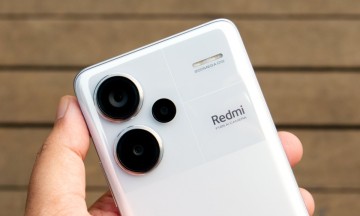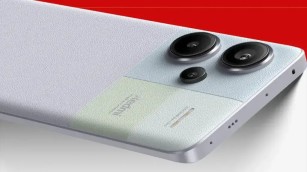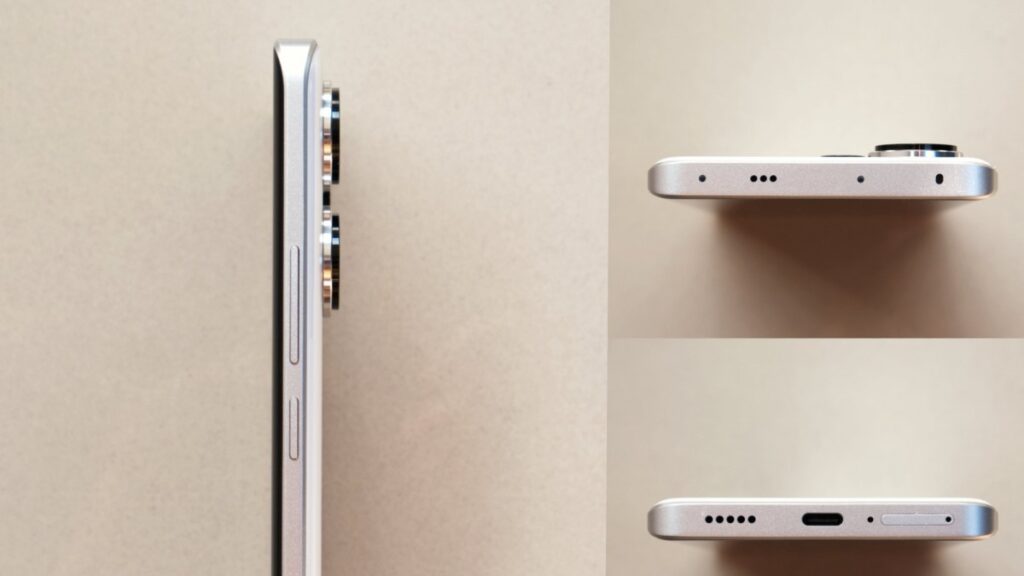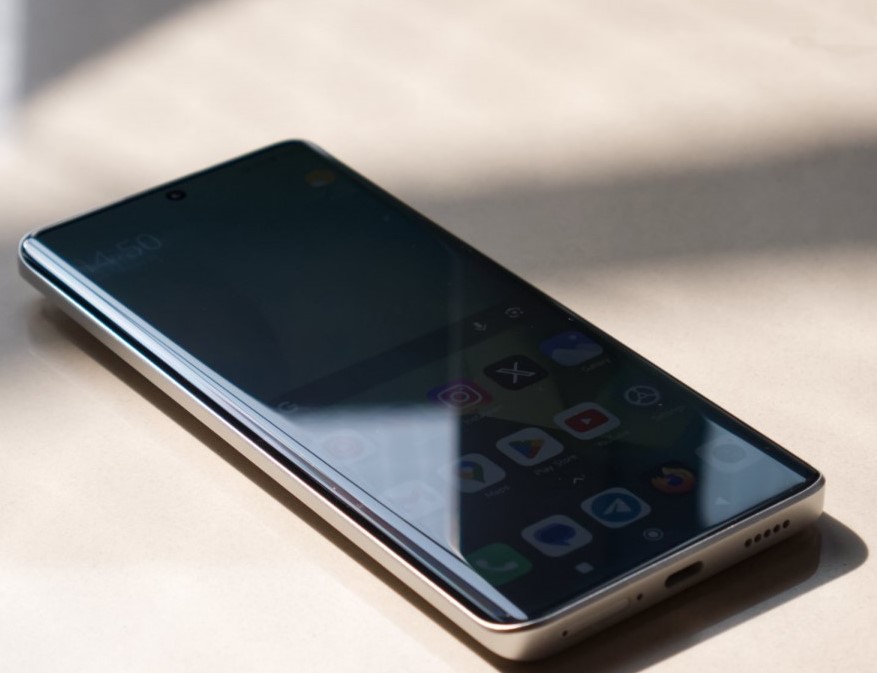The Redmi Note 13 Pro+ 5G stands as Xiaomi’s flagship device within the highly popular Redmi Note series. Although the Pro+ models have been part of the series for several generations, it was only with the Redmi Note 12 Pro+ that the company transitioned from a budget-oriented smartphone series to a premium pricing model.

The Redmi Note 13 Pro+ 5G elevates the stakes, becoming the most expensive Redmi phone to date. What sets it apart? The device boasts an array of high-end features, including a debut curved display in the Redmi series, fortified with Gorilla Glass Victus protection and an IP68 ingress rating. The primary camera showcases a new 200MP Samsung ISOCELL HP3, and the phone retains the super-fast 120W charging, complete with an included charger.
Adding to its allure is the custom MediaTek Dimensity 7200-Ultra, featuring an updated selection of storage and memory options, starting at 256GB and now extending to a maximum of 512GB UFS 3.1.
The Redmi Note 13 Pro+ 5G comes with a starting price of INR 31,999, which is INR 4000 more than its predecessor, the Redmi Note 12 Pro+ 5G, and a substantial INR 11,000 more than the Redmi Note 11 Pro+ 5G launched just two years ago. While this premium is noteworthy, the question arises: is it justified? Let’s delve into that inquiry.
Design:
Xiaomi has introduced some intriguing design elements in the Redmi Note 13 Pro+ 5G. Notably, this marks the inaugural inclusion of a curved display in the Redmi phone lineup. While this design doesn’t offer many practical advantages, its aesthetic appeal is undeniable. Given the company’s shift towards premium pricing for these phones, enhancing their visual appeal seems justified.

The phone’s rear design becomes particularly intriguing in one specific variant. The Fusion Purple model stands out with its back crafted from vegan leather, a term that essentially translates to a type of plastic. Despite the seemingly basic material, what captures attention are the multi-colored geometric segments. These segments draw inspiration from the artistic style of the renowned Dutch painter Piet Mondrian, albeit with a more understated and muted color palette.
Regrettably, this captivating design element is limited to the Fusion Purple model. The Fusion Black and Fusion White variants showcased here, on the other hand, come with a simple glass back, displaying subtle variations in reflectivity between the upper and lower parts of the panel. Nevertheless, individuals may lean towards the glass back on the black and white models, appreciating its superior feel in hand and its resistance to staining compared to soft-touch plastic.
Situated between the two glass panels is a flattened plastic frame, maintaining a uniform shape on all four sides. With a bit of dexterity and patience, one can make the phone stand on three out of the four sides, should there be a desire for a time-consuming endeavor.
At the top of the phone, there is a cutout accommodating the loudspeaker, microphones, and IR blaster. The bottom houses another speaker, microphone, and the SIM tray. On the right side, you’ll find the power and volume buttons.

Visually, the Redmi Note 13 Pro+ 5G successfully embodies the premium aesthetic the company aimed for. However, its true premium quality is highlighted by the incorporation of IP68 dust and water resistance. This feature aligns it with flagship devices from competing manufacturers, presenting a valuable advantage, particularly for individuals residing or working in demanding weather conditions.
Display:
The Redmi Note 13 Pro+ 5G boasts a 6.67-inch AMOLED display with a resolution of 2712 x 1220. This high-quality screen supports a refresh rate of up to 120Hz, features a peak brightness of 1800nits, provides full 100% P3 color coverage, and is safeguarded by Corning Gorilla Glass Victus for added durability.

The display delivers remarkable image quality. Initially configured in the typical cooler, saturated mode out of the box, it can be switched to a standard sRGB mode through the settings, enhancing its impressiveness and color accuracy. For further customization, advanced settings allow manual adjustments to the color gamut, RGB color balance, HSV, contrast, and gamma.
Under typical conditions, the display can achieve a brightness of 500 nits. In bright sunlight, it can globally reach up to 1200 nits, while the advertised peak brightness of 1800 nits is attainable for HDR, albeit limited to a small section of the display or for very brief durations.
The display is capable of refreshing at 120Hz, with the flexibility to adjust down to 90Hz and 60Hz based on content and applications. In the always-on display mode, it can drop to 30Hz. The operating system provides the option to select the refresh rate individually for each app, with choices of 60Hz, 90Hz, and 120Hz. For instance, the default setting for the YouTube app is 60Hz but can be increased to 120Hz. Notably, this adjustment doesn’t impact fullscreen video playback, as it is handled separately, typically settling at 60Hz based on content frame rate.
Furthermore, the phone supports major HDR standards, including HDR10, HDR10+, Dolby Vision, and HLG. It successfully played Dolby Vision content both locally and within the Netflix app.
Now, onto some critiques. The Redmi Note 13 Pro+ 5G exhibits a persistent sharpening and color enhancement filter applied universally across video applications like YouTube, Netflix, Prime Video, and even the built-in Gallery app. This results in a notably strong edge enhancement and saturation filter that appears overly vibrant, particularly in HDR content. Interestingly, Dolby Vision content seems somewhat exempt from the color enhancement but still experiences an excessive level of sharpening.
Regrettably, the most concerning aspect is that this feature is not optional, and there are limited options to disable it. Considering the phone already features a high-resolution display delivering a sharp image with good color saturation, the additional sharpening and color boost detract from the visual experience, resembling something you might encounter on a budget television display in a local electronics store. If Xiaomi insists on incorporating this feature, it would be beneficial to include an option to toggle it off.
Yet another frustration arises from the phone’s ‘always-on’ mode, which, despite its name, fails to remain continuously active. Once activated, it stays on for a mere ten seconds, necessitating a tap on the display to reveal the always-on screen thereafter. This limitation significantly undermines the intended purpose of having an always-on mode.
On a more positive note, the display houses a built-in optical fingerprint scanner, which intriguingly doubles as a heart rate monitor. Although this feature is somewhat hidden within the settings, once discovered, simply placing your finger over the sensor provides real-time heart rate information. A neat and unexpected feature indeed.
Generally, there’s not much to criticize about the display on the Redmi Note 13 Pro+ 5G. The elevated brightness is particularly beneficial for outdoor photography in daylight. However, a notable concern arises from the excessive image sharpening applied to all video apps. Enforcing such a feature should not be a mandatory setting on any device, particularly one that positions itself as a premium offering.
